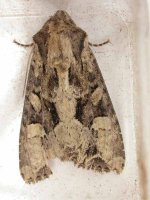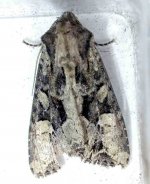The Drinker
...I do it with the light on.
This specimen has been caught on the Island in last day or so. Concensus of opinion is that it is quite a locally rare species. As such any ID views would be appreciated to confirm/negate our thoughts. Not posting what we think as don't want to affect anybodys judgement
Many thanks in anticipation
Many thanks in anticipation





